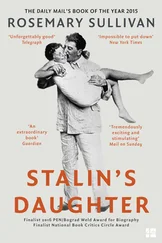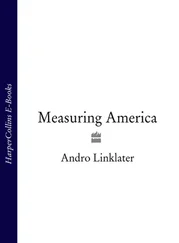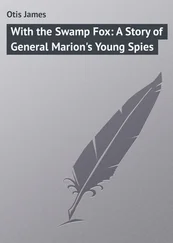An increasingly anxious Wilkinson let his old friend know that, to buy the prisoners’ silence, he was ready “to pay the three two hundred dollars if they should not be compensated by the Spanish government.” But Innes found a cheaper solution. In the weeks since he’d first questioned them no new evidence had come forward, and in March he discreetly concluded that the lack of witnesses made a trial impossible, and that the prisoners should be set free on condition they left Kentucky at once. In June 1795 the unfortunate Major Doyle was summoned upriver to Fort Washington, where he paid the price for his initiative by being put under arrest for disobeying Wilkinson’s orders to let the men through. At about the same time, Vexerano was arrested in New Madrid, and his execution in New Orleans later that year removed the last threat to Wilkinson of exposure by Owens’s murderers.
Nevertheless, suspicion still hung round him—the angry Doyle blamed “a base and ambitious faction” for his arrest—and Wilkinson’s money had gone missing. Most damagingly as it turned out, the distraction had prevented him from feeding anti-Wayne propaganda either to the press or to Congress during the debates on the future size of the army. Although the House voted to reduce its numbers and, as a result, to abolish the post of major general, popular opinion was swinging in favor of the Legion and its commander as the effects of Fallen Timbers made themselves felt.
At the end of 1794, the Legion had marched into the Indiana prairie, the breadbasket of many of the nations that made up the western confederation, and not only destroyed most of their farmland, but erected the looming edifice of Fort Wayne. Before the winter was over, hunger drove the confederation’s sachems and war leaders to begin negotiating a peace agreement. Whatever the ideological argument about the merits of a regular army and a militia, it was becoming obvious that, as Cornelius Sedam, a straight-talking New Jersey soldier, put it, “by many Genl. Wayne has been Sen-sured . . . [but] Saying here and Saying there has no Effect. He has Done the Business and that Settles the Dispute.” On March 3 the Senate agreed, and its vote guaranteed the Legion’s existence for another three years. Nailing Wilkinson’s ambition into its coffin, the Senate also voted to make its commander a major general.
15
DEATH OF A RIVAL
CONFIRMED IN HIS POST and convinced of Wilkinson’s treachery, Major General Anthony Wayne made it his mission to deny his fellow general any part in the army’s business. Wilkinson, he told Knox, was “a vile assassin,” “the worst of all bad men,” who intended to break up the United States with the help of the British in Canada and of secessionists in Kentucky. So far as the major general was concerned, his subordinate “had no command in the army, and if he had any modesty he would resign.”
Thus, while negotiations with the western confederation continued at Wayne’s headquarters in Fort Greeneville, Wilkinson was effectively sidelined in Fort Washington. He missed the steadily increasing pressure that was brought to bear by the Legion’s powerful presence in the Indians’ heartland. He had no part in the negotiations with Blue Jacket, Little Turtle, and other leaders of the western confederation. Finally, on August 3, 1795, he was absent when they assembled at the fort and accepted a new boundary that opened up the first prairies to settlement, including most of western Ohio and much of Indiana. In keeping with Knox’s vision of coexistence, a binding guarantee was also given in the Treaty of Greeneville that “the United States will protect all the said Indian tribes in the quiet enjoyment of their lands against all citizens of the United States.”
That same year, Wayne’s decision not to attack Fort Miami was vindicated when diplomatic negotiations in London resulted in the Jay’s Treaty and Britain’s peaceful withdrawal from all forts on U.S. territory. Quite suddenly, the northern frontier was opened up. Wayne’s triumph completed the humiliation of his subordinate.
Knox, who probably understood Wilkinson as well as any American, had resigned at the beginning of the year. The last two messages Wilkinson sent the former secretary of war concerned Wayne and perfectly reflected the split between his private feelings and public behavior. In reply to Knox’s formal letter offering a court of inquiry, Wilkinson formally promised on January 1, 1795, to drop all public complaint against Wayne—“My Lips are now Sealed, my Pen is dismissed from depicting well founded grievances”— but on January 2 he sent an answer to the secretary’s private letter in which he repeated all his denunciations.
Knox could accept such contradictions, but not his successor, the bald, Puritan disciplinarian Timothy Pickering. Caught between a military rock and a political hard place, Wilkinson found himself unable to plot openly against Wayne. Fearing that a head-on confrontation might bring the risk of his expulsion from the army, he abandoned his call for an inquiry.
IN FORT WASHINGTON, he and Nancy still kept up their lavish displays of hospitality, to the admiration of the Kentucky Gazette . They still ran their carriage through the muddy streets of rapidly growing Cincinnati, despite the presence of hogs scavenging among the refuse and despite the seasonal flooding of the lower part of town. They now had three children being educated in Philadelphia and had to find money for the necessary clothes, shoes, and tutors.
Economic stability had eluded Wilkinson all his life, but the prospect of Carondelet’s dollars had briefly seemed to bring it within his grasp. In the fall of 1794, he had begun buying land again, this time from John Cleves Symmes, whose million acres lay on the northwest side of the Ohio River. Away from the stranglehold of lawsuits and chicanery that was killing Kentucky’s land market, Ohio property was rising in value so fast that in 1795 the Pittsburgh Gazette reported, “Land that two or three years ago was sold for ten shillings [$1.50] per acre, will now bring upwards of three pounds [$9].”
It should have provided the sort of profitable investment in land that Wilkinson had sought ever since he first came west. But by the sort of bad luck that seemed to dog the general’s real estate deals, a surveyor’s error meant that the valuable acres he had bought from Symmes turned out to belong to the U.S. government and were not for sale. Since he had paid with borrowed money and Symmes had run out of funds, Wilkinson again found himself facing creditors, but this time without land he could sell.
In April 1795, a lifeline arrived in the shape of Captain Joseph Collins, who came downriver from Pittsburgh, thereby escaping Major Doyle’s eagle eye. Yet here, too, it seemed that fortune was against Wilkinson. In a message to Gayoso, Wilkinson revealed that Collins had somehow contrived to lose $2,500 in a land speculation that went sour. Since Wilkinson continued to trust Collins as a messenger, he was probably lying slightly and this was actually money owed on the Symmes deal. Nevertheless, once travel expenses, incidental debts, and Collins’s fee as a courier had been paid, Wilkinson was left with just $1,740 instead of the $6,333 he had expected. Altogether, less than one seventh of the money that he had been promised by Carondelet the year before had actually arrived in his hands.
“If my very damned and unparalleled crosses and misfortunes, did not uncash me, I would be with you in flour,” he replied regretfully when an old friend, John Adair, invited him to join a trading expedition to New Orleans that summer. He still hoped to recoup some of the stolen money— “this sum is not lost, but is not within my control”— but even when it was eventually paid, other demands would be made upon it. He was still being sued for $3,000 by his former partner Peyton Short, and Harry Innes continued to demand money to pay off bonds he had underwritten. Small wonder that Wilkinson should have scrabbled so desperately to retain his dual role as general and spy.
Читать дальше












